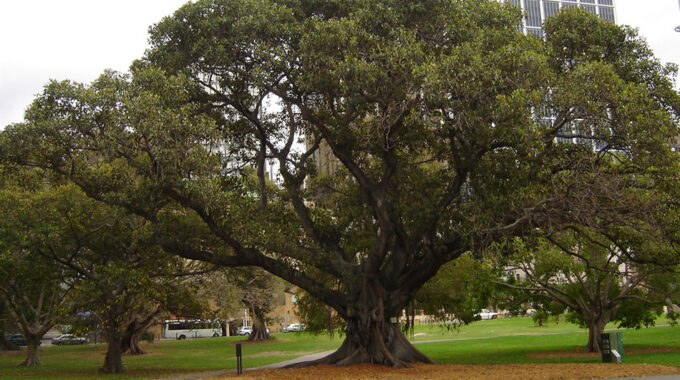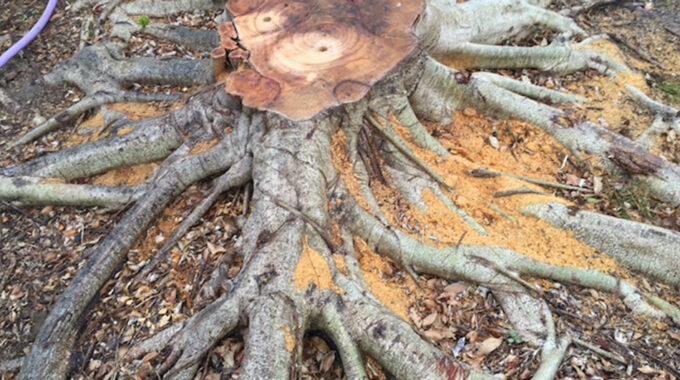
How to Remove a Fig Tree Stump Including Roots
The Cons of having a Fig Tree
Fig trees, with their sprawling branches and sweet fruit, are a beloved feature in many Australian gardens. However, these beautiful trees come with a hidden challenge—extensive root systems that can cause damage if not properly managed. When it becomes necessary to remove a fig tree, simply cutting it down isn’t enough. To prevent future problems, you need to remove the stump along with the roots. This guide will walk you through the entire process, ensuring that you can remove the stump effectively and with minimal hassle.
At Tree Removal Nearby, we’re dedicated to providing comprehensive information on all aspects of arboriculture. Whether you’re looking to remove a tree stump yourself or considering professional assistance, we’re here to help you every step of the way.
In This Article:
- Understanding Fig Tree Roots
- Methods for Removing a Fig Tree Stump
- Precautions to Take After Stump Removal
- Preventative Measures for the Future
- Let the Professionals at Tree Removal Nearby Help

Figs can be pretty tenacious and I’ve seen someone in the neighbourhood who cut their tree down to the ground every few months and it sprouts right back up. You have to dig up the root ball. – Reddit
Understanding Fig Tree Roots
Fig trees are known for their large, invasive root systems. These roots can spread far beyond the tree’s canopy, sometimes reaching under pavers, towards house foundations, or even into plumbing systems. A general rule of thumb is that the roots spread as far under the ground as the branches do above it. This extensive root system can be a serious concern for homeowners, particularly if the tree is planted close to structures.
In forums, many gardeners have shared their concerns about fig tree roots. For example, Michele Miers from Adelaide shared her experience: “Our fig tree has sent roots under our pavers and is heading straight under the house. No damage has been done to the house yet, but we need to remove it before it does.” This is a common issue with fig trees, making it crucial to address the roots when removing the stump.
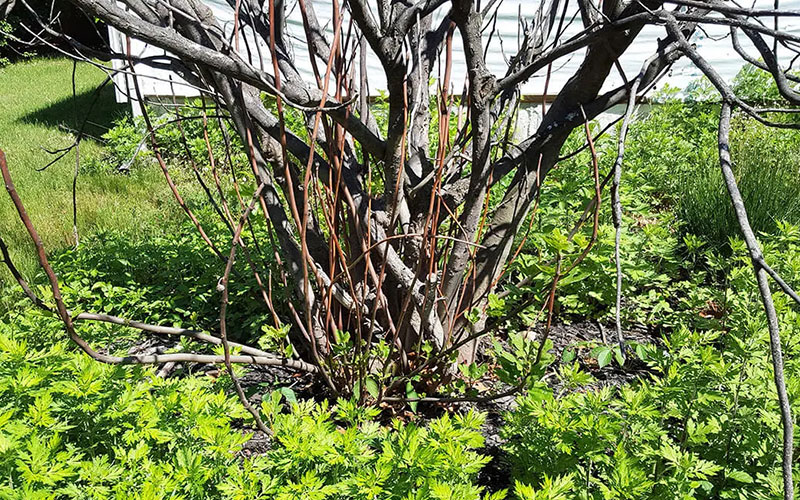
Methods for Removing a Fig Tree Stump
There are several methods you can use to remove a fig tree stump, ranging from manual removal to chemical treatments and professional services. Below, we’ll explore each method in detail, so you can choose the one that’s best for your situation.
Manual Removal
Manual removal is the most thorough method, especially when dealing with the extensive roots of a fig tree. It’s labor-intensive but highly effective if done correctly.
Tools and Materials:
- Axe
- Crowbar
- Mattock
- Pruning saw
- Rake
- Shovel
I recommend renting a stump grinder, or hiring a tree service to grind the stump and the larger roots. You can water the area well to soften the soil, and try digging up the remaining roots. – Depts.washington
Step-by-Step Guide:
- Dig Around the Base of the Tree Trunk:
Start by using a mattock to loosen the soil around the base of the stump. Work in a circle, starting a bit further out from the base to avoid hitting the major roots right away. Once the soil is loosened, use your shovel to dig out the dirt and expose the root system. This initial step is crucial for gaining access to the roots you need to cut. - Cut the Upper Root System:
After uncovering the top layer of roots, use a pruning saw to cut through the medium-sized ones. For larger roots, an axe will be necessary. To make the cutting easier, remove as much soil as possible from around the roots before you begin chopping. This will not only give you better access but also reduce the wear on your tools. - Cut the Lower Roots and Remove the Tree Stump:
With the upper root system cleared, dig underneath the stump. Use the stump itself as a lever, pulling it away from the soil to reveal the lower roots. Once these roots are exposed, use your pruning saw and axe to cut through them. After all the roots are severed, you should be able to pull the stump out of the ground. Finally, fill the hole with soil and compact it to prevent any sinking.
Manual removal is highly effective but can be physically demanding. It’s important to pace yourself and use the right tools to avoid injury.
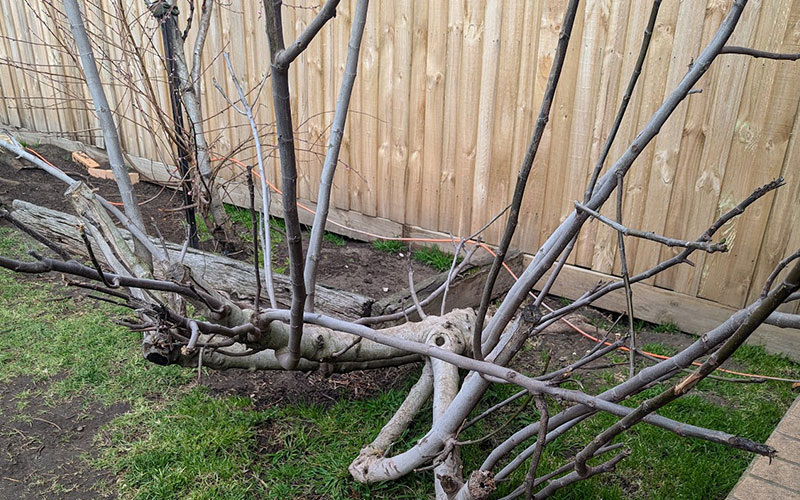
Chemical Methods
Chemical stump removal involves applying a chemical compound, usually containing glyphosate, directly to the stump and roots. This method is less labor-intensive than manual removal but requires patience, as it can take several weeks or even months for the stump to decay fully.
Using Chemical Stump Removers:
- Drill Holes into the Stump:
Start by drilling several holes into the top of the stump. The holes should be about 20 cm (8 inches) deep and spaced evenly across the surface. - Apply the Chemical:
Pour the stump remover into the drilled holes according to the product’s instructions. The chemical will seep into the wood, accelerating the decomposition process. - Wait for the Stump to Decay:
Over time, the stump will become soft and spongy, making it easier to break apart and remove. This process can take anywhere from a few weeks to several months, depending on the size of the stump and the chemical used. - Remove the Decayed Stump:
Once the stump has decayed, use a shovel or an axe to break it apart and remove the pieces. Be sure to remove as much of the root system as possible to prevent regrowth.
Chemical stump removal is a good option for those who prefer a less physically demanding method, but it does require patience and careful handling of chemicals.

Figs are notoriously difficult to remove, the root plate is huge. I have dye indicated a fig at a local school and found the root system on the other side of 2 basketball courts. – Whirlpool
Professional Removal
If the stump is particularly large, or if you’re concerned about damaging nearby structures, hiring a professional arborist is often the best option. Professionals have the equipment and expertise to remove even the most stubborn stumps safely and efficiently.
Benefits of Professional Stump Removal:
- Efficiency: Professionals can complete the job quickly, saving you time and effort.
- Safety: Stump removal can be dangerous, especially if the stump is near structures or utility lines. Arborists have the training to handle these situations safely.
- Thoroughness: A professional service will ensure that the entire root system is removed, reducing the risk of regrowth.
At Tree Removal Nearby, we offer comprehensive stump removal services, including both manual and chemical methods. Our team can assess your situation and recommend the best approach to ensure the job is done right.
Precautions to Take After Stump Removal
Removing the stump is only the first step. It’s important to take precautions afterward to prevent the roots from sending up new shoots or causing other issues.
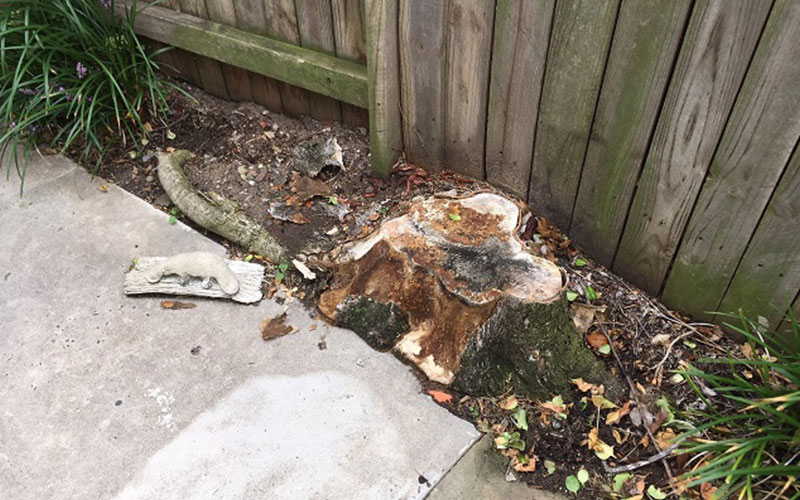
Monitoring for Root Suckers
Even after the stump is removed, fig tree roots can sometimes send up new shoots, known as suckers. These suckers can grow into new trees if not properly managed. To prevent this, monitor the area regularly and remove any new growth as soon as it appears.
Installing Root Barriers
In some cases, it may be necessary to install a root barrier to prevent any remaining roots from spreading. A root barrier is a physical barrier placed in the soil that blocks roots from growing beyond a certain point. While root barriers are not always foolproof, they can be effective in limiting the spread of roots.
Preventative Measures for the Future
Once you’ve successfully removed the fig tree stump and roots, it’s important to take steps to prevent future issues, especially if you plan to plant new trees.
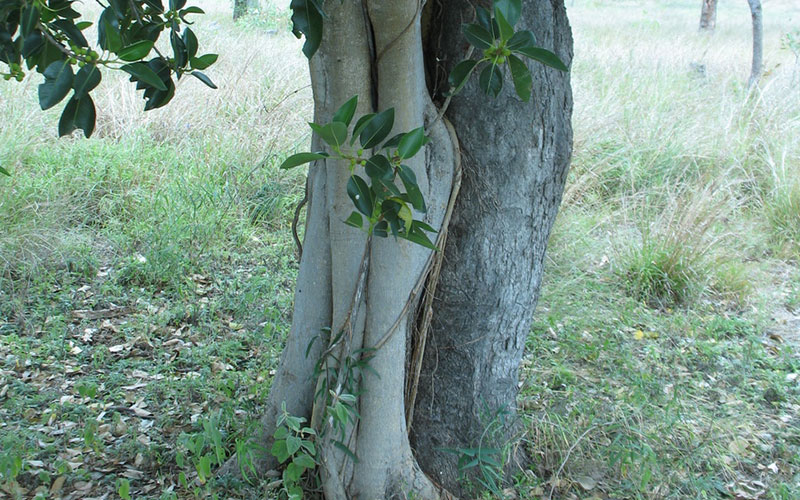
The stump of a fig tree may continue to grow shoots because the plant is still very much alive. – Quora
Choosing the Right Location for New Fig Trees
If you plan to plant another fig tree, be mindful of its location. Planting too close to structures can lead to the same problems you just solved. Consider planting the tree in an area where its roots will have plenty of space to spread without causing damage. Alternatively, planting fig trees in large containers can help contain their root systems and prevent them from becoming invasive.

Fig Tree Stump Removal: Let the Professionals at Tree Removal Nearby Help
Removing a fig tree stump, especially one with a large root system, can be a challenging task. Whether you choose to tackle the job yourself or hire a professional, it’s important to approach it with the right tools, techniques, and precautions.
At Tree Removal Nearby, we’re here to help you every step of the way. Our team of experienced arborists can provide expert advice, tools, and services to ensure your stump removal is successful and hassle-free. For more information or to schedule a consultation, visit our Tree Removal Services page or contact us directly.

